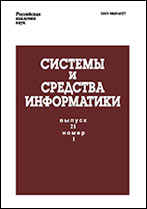|
This article is cited in 1 scientific paper (total in 1 paper)
Models of fault-tolerant self-timed circuits
Yu. A. Stepchenkova, A. N. Kamenskihb, S. F. Tyurinb, Yu. V. Rogdestvenskia
a Institute of Informatics Problems, Federal Research Center "Computer Science and Control" of the Russian Academy of Sciences, 44-2 Vavilov Str., Moscow 119333, Russian Federation
b Faculty of Electrical Engineering of the Department of Automation and Telemechanics, Perm National Research Polytechnic University, 29 Komsomol Prosp., Perm 614990, Russian Federation
Abstract:
The development of both the reliable and the energy-efficient computing systems is one of most important tasks in the XXI century. The usage of self-timed circuits makes it possible to improve energy-efficiency of a computing system. However, the complexity increase in not fault-tolerant self-timed circuits leads to decrease of reliability. The fault-tolerant self-timed implementation of digital devices makes it possible to increase not only reliability but also the complex index “energy–consumption/reliability.” The further development of synthesis methods of fault-tolerant self-timed circuits will allow to compensate the negative effects of self-timed circuit's development by the positive effect of complex index increasing. The paper describes the models and algorithms of fault detection which are developed to improve validity and reliability of actively fault-tolerant self-timed circuits.
Keywords:
reliability; energy-efficiency; energy-reliable; self-timed circuit; fault-tolerant; self-repair.
Received: 15.09.2016
Citation:
Yu. A. Stepchenkov, A. N. Kamenskih, S. F. Tyurin, Yu. V. Rogdestvenski, “Models of fault-tolerant self-timed circuits”, Sistemy i Sredstva Inform., 26:4 (2016), 19–30
Linking options:
https://www.mathnet.ru/eng/ssi486 https://www.mathnet.ru/eng/ssi/v26/i4/p19
|

| Statistics & downloads: |
| Abstract page: | 214 | | Full-text PDF : | 92 | | References: | 50 |
|




 Contact us:
Contact us: Terms of Use
Terms of Use
 Registration to the website
Registration to the website Logotypes
Logotypes








 Citation in format
Citation in format 
